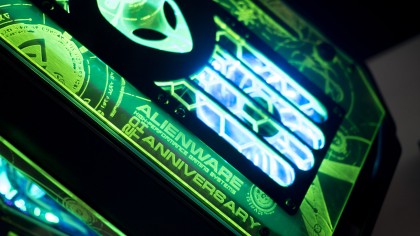
The 20-year history of Alienware
While Alienware is largely known as Dell's gaming arm today, did you know it was actually first started in 1996 as a PC company under a different name?
That's right, Alienware humble beginnings started 20-years ago and since then the company has introduced hundreds of gaming desktops PC, laptops and even a virtual reality rig you've probably never heard about.
To commemorate the big birthday and to close out PC Gaming Week, join us as we take a stroll through Alienware's rich 20-year history, highlighting some of the biggest innovations the company has brought into the PC gaming world.

1996: The founding
Well before the Dell acquisition or the company even existed as Alienware, Nelson Gonzalez originally started the business as a PC company named Saikai. However, before long Gonzales found himself building more computers for gaming rather than work or traditional home PCs.
"Nelson was building PCs for a lot of friends and family but mostly what he was getting were requests to have their PCs built around gaming," Alienware general manager Frank Azor tells us.
"Back then it was really hard, 16-bit and 32-bit DOS, Windows, 2D and 3D video cards," he says. "A lot of his friends and family were buying PCs from Gateway and Compaq, but they couldn't really get Doom or Quake running properly because it was a pain. And if they could get one game to run, it was hard to get the others going."
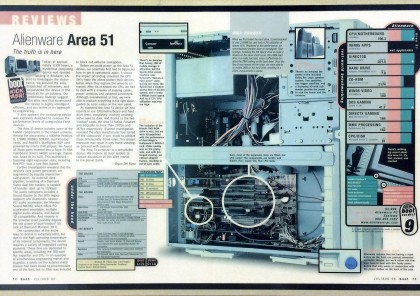
1997: Becoming Alienware
The popularity of Saikai's gaming PCs continued on into the next year and before long, Gonzalez recruited his childhood friend Alex Aguila for help. By the end of the year the team decided to only build PCs specialized for gaming and the company also renamed itself Alienware, which took inspiration from Gonzalez's interest in The X-Files TV show and aliens in general.
"They were competing in a sea of other PC builders out there and that's when they built a badass rig called the Alienware Blade and sent it to Boot Magazine," Azor expounds.
"They loved it and asked him for a phone number and a website, and from there Alienware sent out a review machine to PC gamer," he says. "Byran del Rizzo was the editor at the time and he wrote that he didn't want to send the machine back because he loved it that much and it got an editor's choice award."
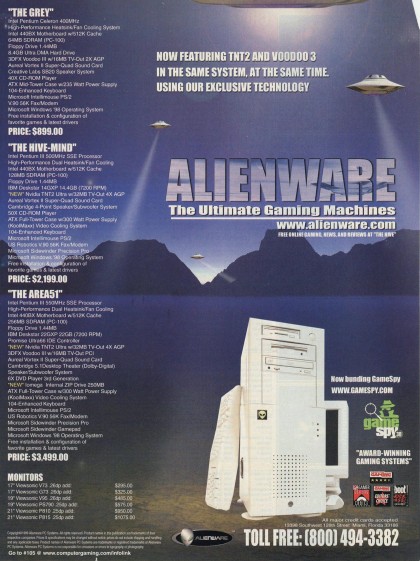
1998: The winning gaming PC
In the following year, the Alienware Blade evolved into the very first Area 51 PC tower. The Intel machine came running with three video cards including one for 2D graphics and two additional 3D add-on cards with 3Dfx's Voodoo PC chip. Additionally, the Area 51 featured dual soundcards, which supported both Sound Blaster 16 and DirectX 3D audio.
For this sweet configuration you were looking at a price tag close to $3,799. In the following year, Alienware introduced an AMD-powered variant of the Area 51 christened the Aurora. Then, on the turn of the century, in the year 2000, the company added an array of metallic colors including Nova Yellow, Plasma Purple, Saucer Silver, Conspiracy Blue, Cyborg Green, and Martian Red.
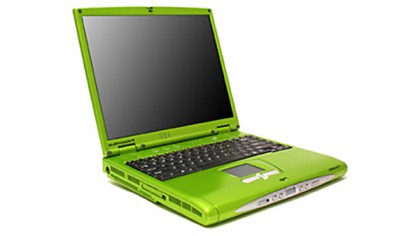
2002: Going mobile
The Alienware Area 51-M was the company's first ever gaming laptop, and its specs included a 15-inch display paired with a 2.4GHz Intel Pentium 4 processor and Radeon 7500 graphics card. Add on 512MB of RAM and a 40GB hard drive, integrated floppy and DVD drive and a built-in modem, and this made for a compelling desktop replacement.
Of course, a machine from this era had its short comings, including an incredibly short battery life, and the laptop itself weighed in excess of nine pounds without factoring in the fan-cooled power supply. Also, being priced at $2,700 made it prohibitively expensive to buy at the time – and even for modern times.
Fun note: Alienware was working on a virtual reality system 14 years ago called the Area 51 VR. As Azor explains, the rig was comprised of stereoscopic glasses and display, a special graphics card and some games specifically written to take advantage of it.
Additionally, there was a rumble chair to give you the sense of haptics and vibration with speakers placed right behind your ears so you had spatial audio. Alienware also rethought the controls with an orb-shaped, 360-degree controller to give users a whole new dimension of control.
"That was our initial vision of how do we take a step forward in merging reality and the virtual world," he says. "It was pretty cool, because you look at where we are and we've taken this giant leap now with head mounted displays and it's so in line with our vision."
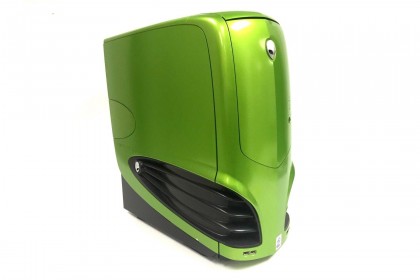
2003: The big one
In 2003 Alienware introduced the Area 51 Predator 1, the first machine to include its now defining Alien head design and space-age inspired aesthetics.
"Our initial a designs like Predator 1 and Predator 2 had a very curvy nature to them and they draw a lot of inspiration from the 1950s, 1960s, and flying saucers from the Roswell era," Azor says. "These were the types of alien identities we thought of back then."
"We realized we're going to have to develop our own stuff to remain relevant and keep the vision we had," Frank recalls. "That chassis really put us on the map as the Alienware we're known as today and it still influences a lot of the designs we have today."
"If you look at the back of our notebooks they have this spine, it was first introduced in the Predator 1," he says. "It has evolved over time and became more sophisticated, but the iconic nature of that chassis has carried through to every product we have developed since then."
Beyond looks the Predator 1 was one of the first systems to utilize a 256MB Nvidia GeForce FX 5900 Ultra graphics card. The rig also came specced with Intel's 3GHz Pentium 4 processor, which ran on an 875 chipset (code-named Canterwood).
The price? $3,599.
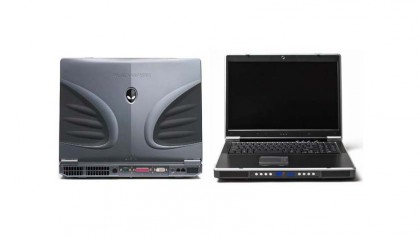
2005: Beastly gaming notebooks
Eventually the alien eye design of the Predator 1 would trickle down to laptops, however, the first gaming notebook to truly deliver mobile power was the Area 51 m7700. The machine came stacked with power including an AMD Athlon 64 FX-60 dual-core and 256 MB Nvidia GeForce 7800 GTX graphics card. Two 80 GB HDDs (7200rpm) in RAID-0 with a hot 8X dual layer DVD+/-RW drive and 17 WXGA+ 1,440 x 900 display to top it off.
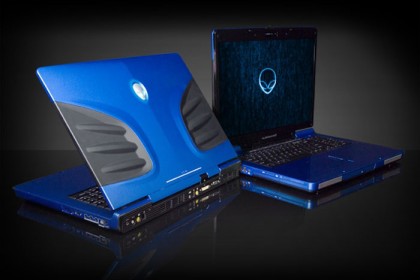
2006: The Dell acquisition
10 years after its founding, Alienware became a part of Dell in a widely anticipated acquisition.
At the time, Alienware's products were already available in America and certain parts of Asia including Japan and Korea – but Gonzalez sought to expand its reach worldwide. To do this, Gonzalez realized Alienware could reach this goal on its own as an independent boutique PC maker as it lacked the resources to fully expand.
As part of the deal Alienware retained control over the design and marketing of its products. Dell, meanwhile, provided its purchasing power, economies of scale and supply chain.
"When Dell acquired us 10 years ago, the most important thing we said to them was #1 the Alienware brand means something to customers and we have to continue to meet that promise, and #2 we need to continue investing and innovating," Azor says. "And Dell absolutely agreed"
Alienware's laptops already had the reputation of being outrageously quick, but 2006 saw the introduction of the M17 as the first gaming laptop feature dual graphics. The 17-inch Alienware Aurora m9700 was the first SLI graphics-powered gaming notebook to feature dual high-performance GeForce Go 7900 GS GPUs.
Together the two graphics cards allowed the Aurora 9700 deliver solid frame rates even when playing games at Full HD resolution (1,920 x 1,080). Aside from the graphics power, the 17-inch gaming laptop came with loads of drive space, an integrated TV tuner and even a surround sound hook up.
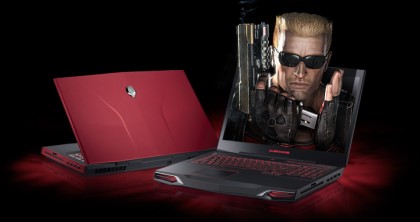
2009: A complete redesign
A few years after introducing an Nvidia SLI powered gaming laptop, Alienware announced the M17 as the first gaming laptop feature dual AMD graphics.
Utilizing ATI's CrossFireX dual graphics card technology, users could equip their machines with dual ATI Mobility Radeon HD 3870 for a total of 1GB of video RAM. The processor could also be upgraded to an Intel Core 2 Extreme QX9300 quad-core CPU running at 2.8GHz.
At the Tokyo Game Show in late 2009 Alienware introduced a complete design overhaul, taking the company into its modern era. The Alienware m15x and m17x gaming notebooks featured a much sleeker and futuristic design. The new look added magnesium alloy to the exterior and a new set of stealth fighter-inspired front grills with glowing LEDs.
Internally the two mobile gaming platforms were outfitted with a 2.0GHz Core i7 920XM Clarksfield processor, 1GB NVIDIA GeForce GTX 260M, 8GB of DDR3 RAM and a 500GB HDD or 256GB SSD.
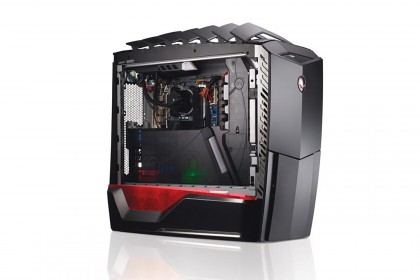
The Aurora and Area 51 desktops also were revamped with a sleeker design, looking like something between a bullet train and an alien pod. The ALX versions also introduced automatically adjustable top fins, which would open as the computer's internal temperature rose and give the liquid-cooling system some room to breathe.
At the time you could set up configurations as lofty as a 3.6GHz Intel Core i7 975, dual 1GB ATI Radeon HD 5870 GPUs and 12GB of DDR3 RAM with plenty of room for storage.
Azor explains the redesign came as an "evolution of the industrial design to where we think of aliens today in the futuristic sense."
"We think of movies like independence day when they came out 20 years ago and how that put aliens in more of a futuristic sense," he says. "We had the movie aliens as well 30 years ago and that was more organic, so you've seen our design follow through those times as well with Predator 1 and 2.
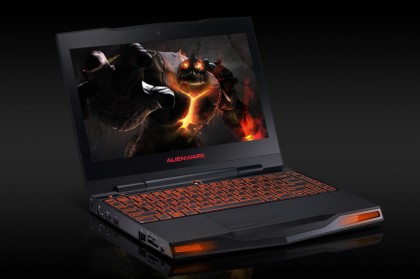
2010: The world's smallest gaming notebook
Following a big year of redesigns, Alienware introduced its smallest gaming laptop yet with the m11x. An 11-inch gaming laptop was almost unthinkable at the time, but this teensy machine came loaded with power.
The Alienware m11x's specs included a discrete Nvidia GT335M graphics card, Intel Core 2 Duo SU7300, 11.6-inch LED WXGA (1,366 x 768) display, 2GB of DDR3 memory and either a 500GB hard drive or a 256GB SSD. As for performance, this mini-gaming platform afforded nearly 30 fps performance in Batman: Arkham Asylum and the same for Crysis with details set to medium.
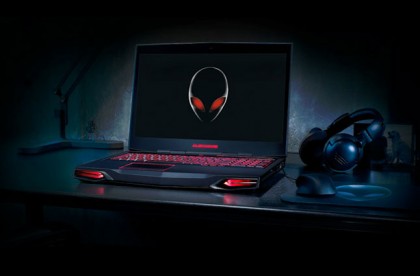
2011: Go big or go home
While 2010 saw Alienware's smallest laptop, the PC maker introduced the massive 18-inch Alienware m18x in 2011.
Featuring an monstrous 18.4-inch 1,920 x 1,080 Full HD display, this beastly gaming laptop could be specced with your choice of either AMD CrossFireX or NVIDIA SLI graphics. On board was also an Intel Core i7 Extreme CPU, 32GB of DDR3 RAM and plenty of storage for you choosing as well.
In a figurative and literally smaller note, the 14-inch Alienware m14x also was debuted in 2011.
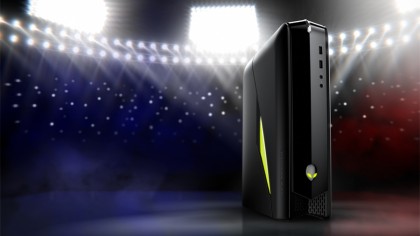
2012: Mini gaming desktops
Seven years into a long console life cycle (six for the PS3), we weren't sure whether Microsoft or Sony were ever going to introduce updated systems. However, Alienware wasn't just going to let the year slip by, and so it introduced the X51.
The Alienware X51 was just about the same size as the original PS3 and much smaller than other gaming PC rigs, and yet it was a full-fledged desktop machine. You could set up the machine with Intel Core i7 and Nvidia GeForce GT545 graphics power.
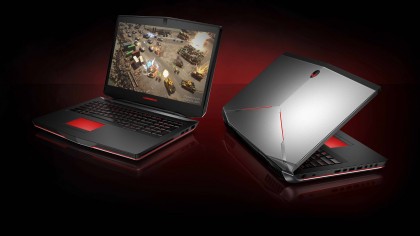
2013: Extreme makeover: laptop edition
Four years after the big makeover, Alienware's gaming laptop fleet saw another makeover and even a new naming scheme.
The Alienware 14, 17 and 18 were all fitted with a new suit of armor consisting of an aluminum lid and magnesium alloy chassis. The 2013 refresh also added more lighting zones including lighting strips that would wrap around the edges of the machine, a light up trackpad and a customizable backlit keyboard.
Standard configurations for the Alienware included a quad-core Intel Core i7 processor, dual Nvidia GTX 765M (2GB GDDR5 RAM) graphics and a 1080p display.
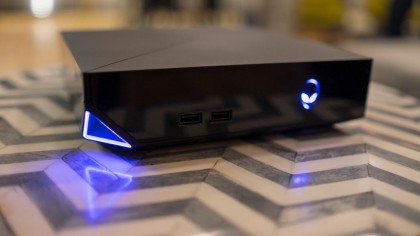
2014: The banner year
2014 was a banner year for Alienware, complete with four big announcements.
To start off, Alienware announced its Alpha Steam Machine, a miniature PC box smaller than even an Mini ITX system. Despite its diminutive size, it came packing Intel Core i5 graphics and even Nvidia GTX860M graphics.
Though it was first introduced as a Steam Machine, due to delays on SteamOS on Valve's part, the system actually launched as a standalone Windows 8 PC with a few extra interface flourishes to make it couch-friendly.
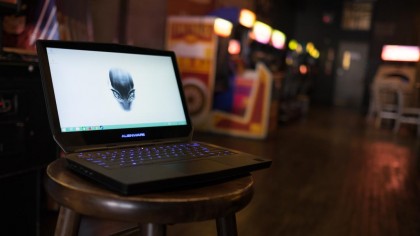
In 2014, the company also announced its second smallest gaming laptop with the Alienware 13. Ditching the optical drive, the 13-inch notebook came with a 2,560 x 1,440 touch panel display and Nvidia GTX 860M for graphics.
And to top it off, Alienware also introduced a Graphics Amplifier, which essentially connected a desktop-grade graphics card to its smallest gaming notebook.
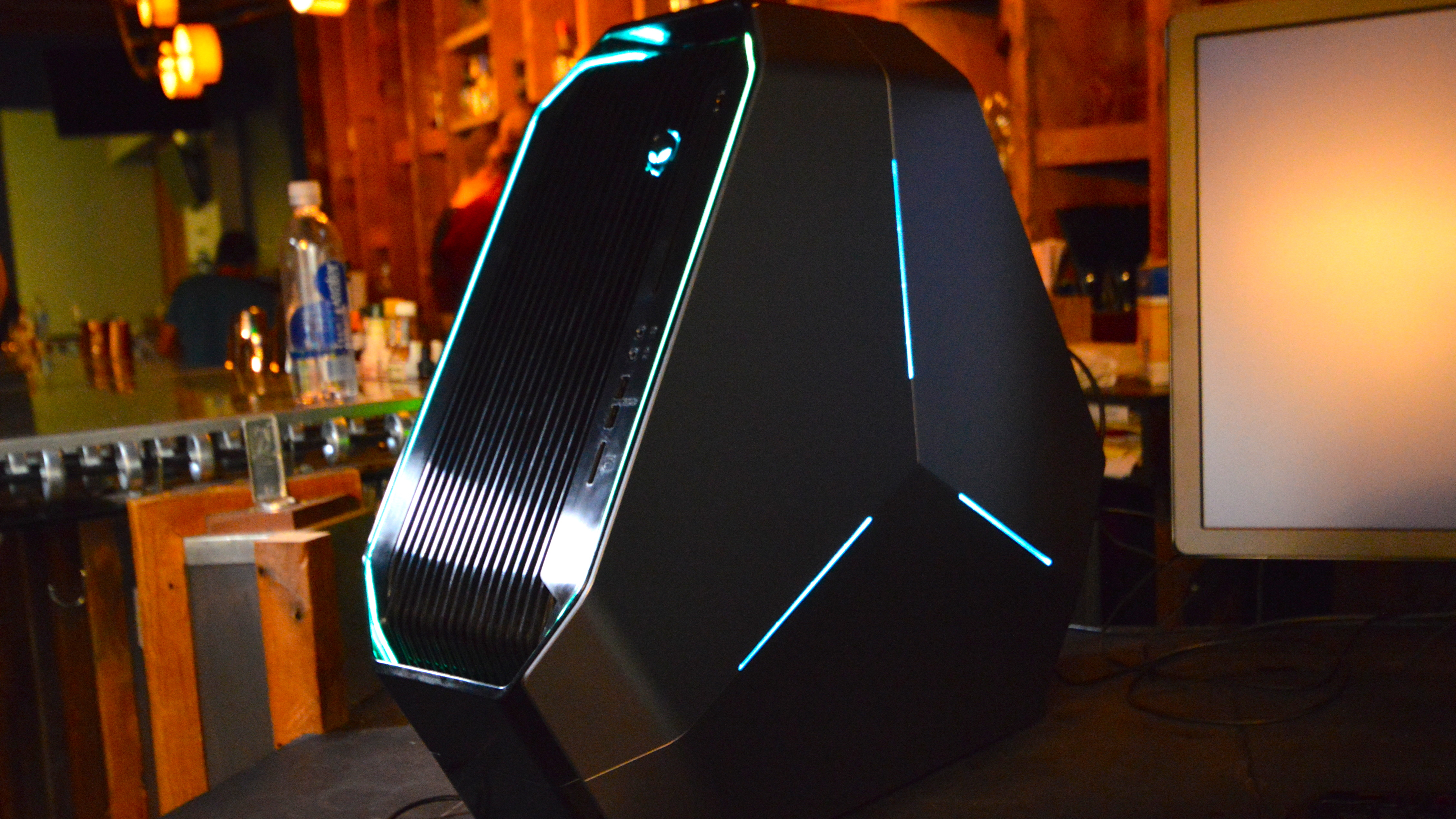
Last but not least, the Dell-owned company introduced its head turning Alienware Area 51 desktop. Instead of traditional rectangle, the Area 51 took on the shape of a triangle. The design was unique to be sure, but also functional.
"We thought completely out of the box, and it's not a box," Azor jokes. "Of all the area 51s we've ever built, this is the one we took the most time. We spent three years designing it, did a bunch of research and we did a lot of innovative things."
When asked why Alienware designed a triangle, Azor explains, "you want the ports facing you, we put a handle in it so you can tilt it forward, there's a light in the back so you can find the ports, and so that hot air coming out the back doesn't get blocked when you push it back against the wall."
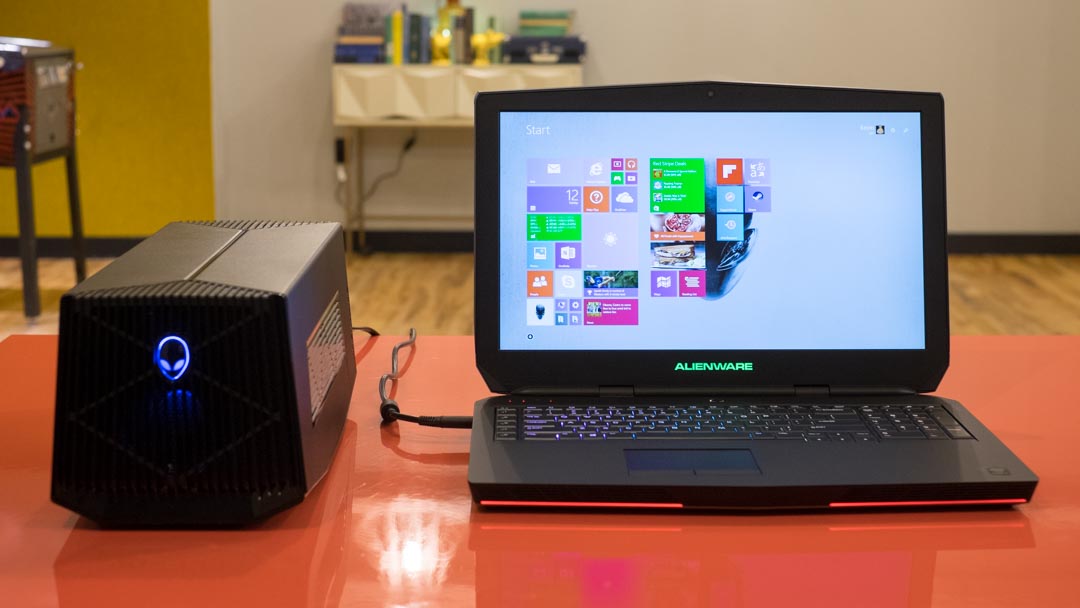
2015: Lighter gaming laptops for everyone
Following in the footsteps of the Alienware 13, the company also slimmed down its 15-inch and 17-inch gaming laptop offerings.
The new Alienware 17 and Alienware 15 also dropped their respective optical drives in favor of a thinner and sleeker build. These machines also dropped the use of plastic in favor of more carbon fiber for a lighter build. To top it off, both machines also work with Alienware's Graphics Amplifier, boosting their gaming potential.
The two machines started off their life with Haswell processor and Nvidia 980M graphics, but it didn't take then long to see a Skylake-based refresh.
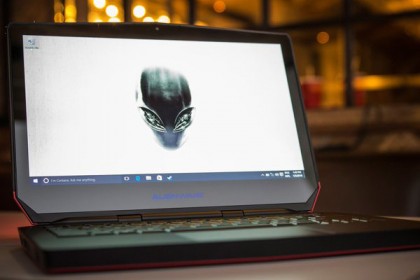
2016: Going strong for 20 years
Although, we're just starting to approach the halfway point in 2016, Alienware has already kicked off the year with a bang introducing the first OLED screen on a gaming laptop. The Alienware 13 got a small upgrade with the organic display and the company argues it makes the most sense for a gaming machine as the OLED screen offers the best refreshing rate.
"Not a lot of PC companies last 20 years and that's a big milestone for us," Azor says, crediting most of their success to the company culture of reinvesting and innovating.
"Nelson and Alex were always of the mentality that we need to continue to reinvest in the business," he says. "They could have made the choice to pull a lot of money out of the company early on and take it home and live richly. But, they always were of the mindset that we should reinvest in the company with a future in mind. And that's why you see Alienware innovate in so many areas over its 20 year history."
- Check out everything else we've written for PC Gaming Week

Kevin Lee was a former computing reporter at TechRadar. Kevin is now the SEO Updates Editor at IGN based in New York. He handles all of the best of tech buying guides while also dipping his hand in the entertainment and games evergreen content. Kevin has over eight years of experience in the tech and games publications with previous bylines at Polygon, PC World, and more. Outside of work, Kevin is major movie buff of cult and bad films. He also regularly plays flight & space sim and racing games. IRL he's a fan of archery, axe throwing, and board games.